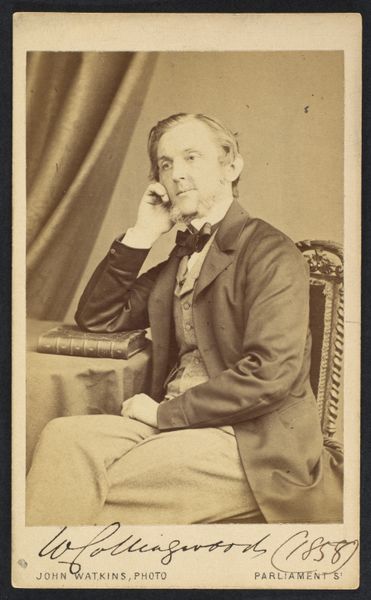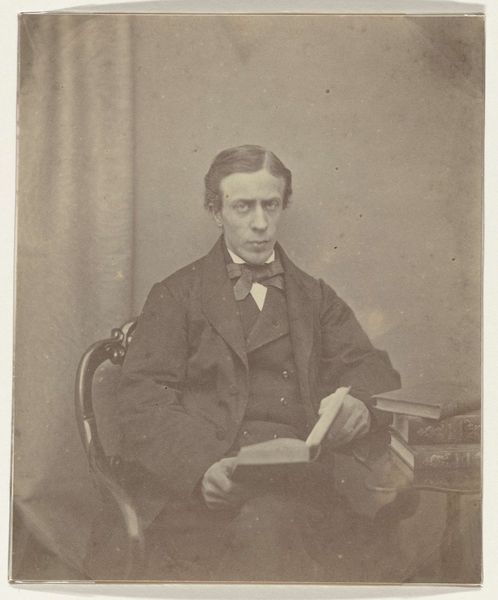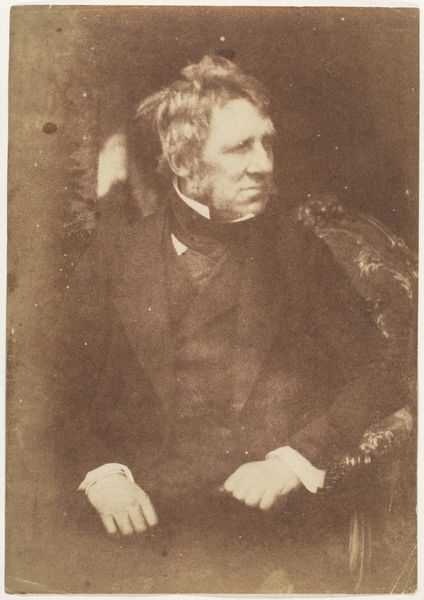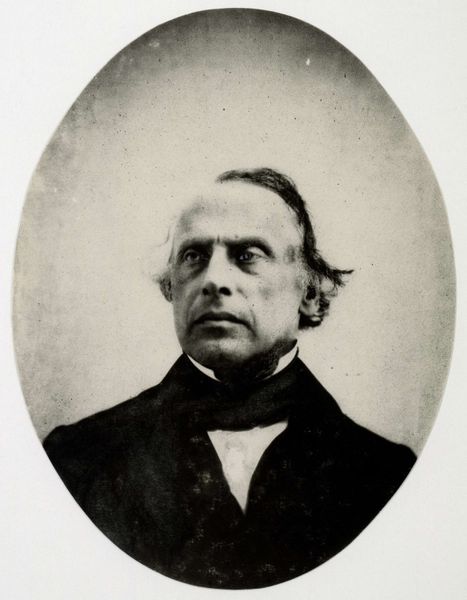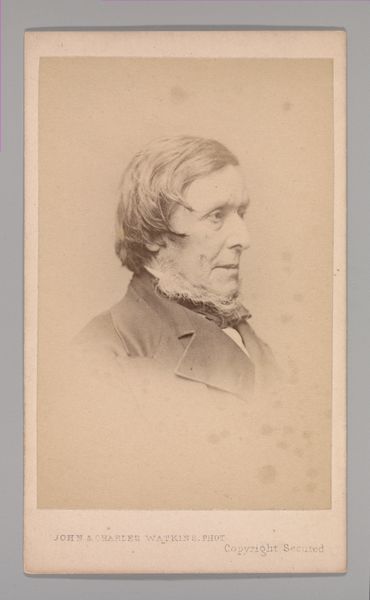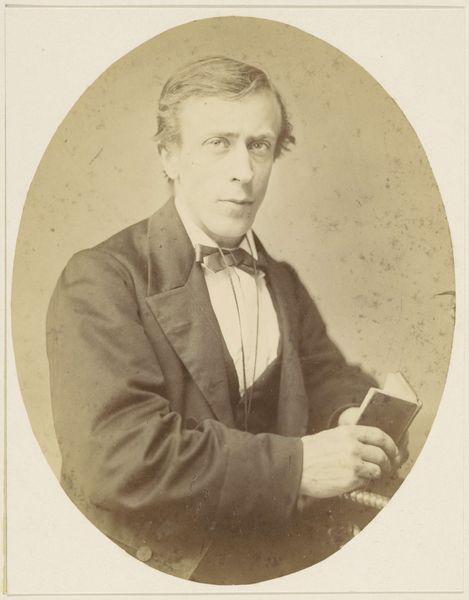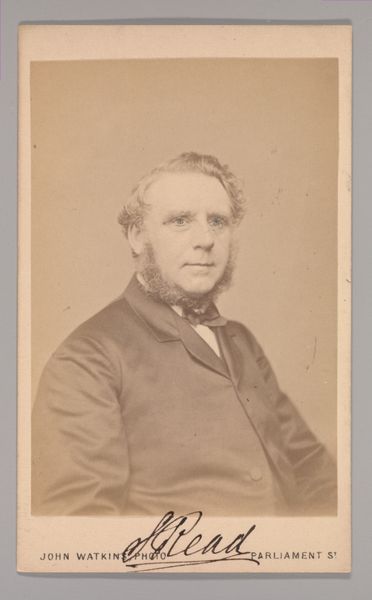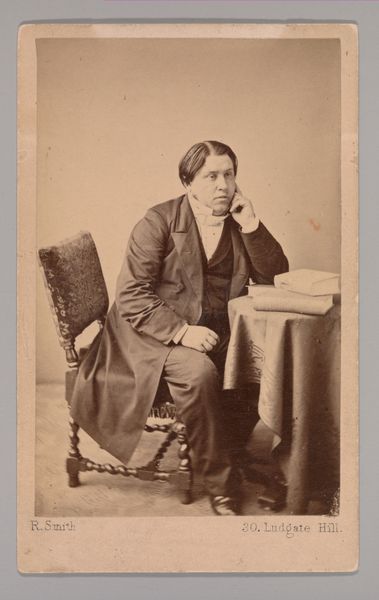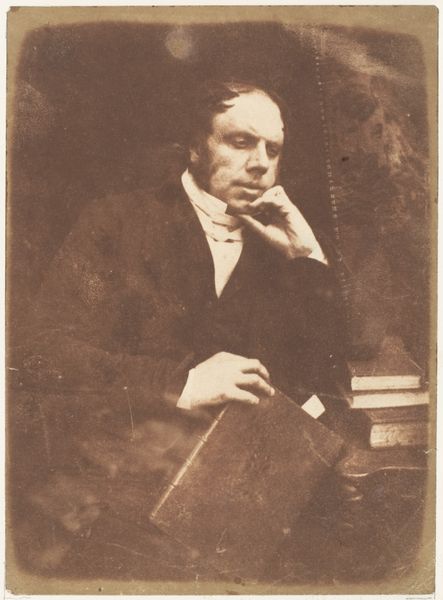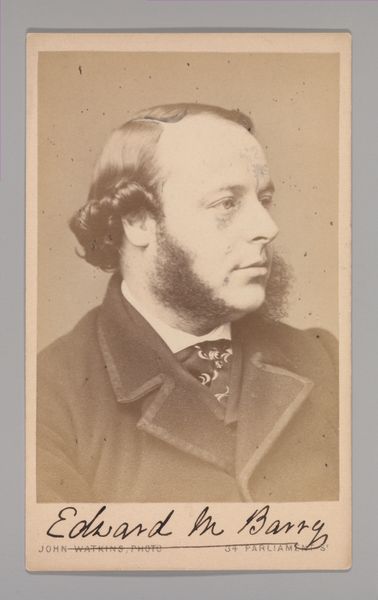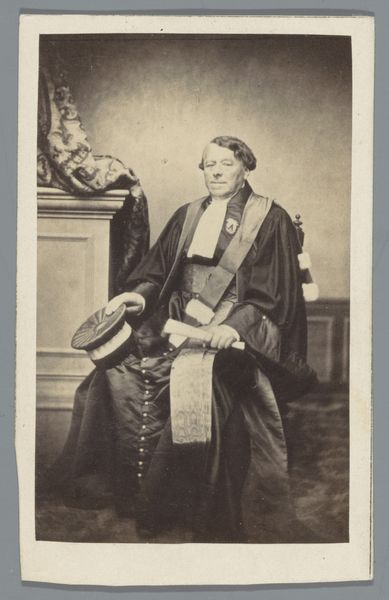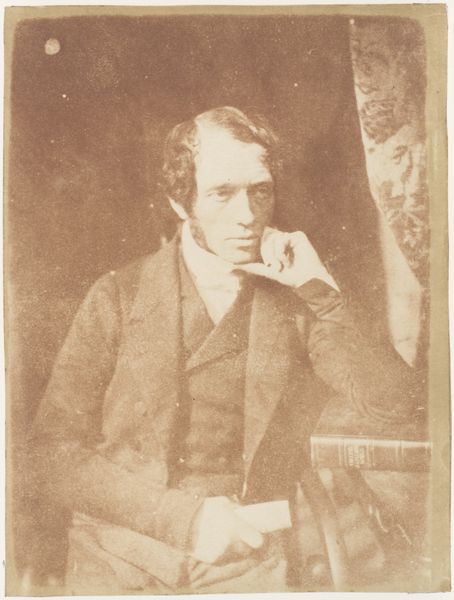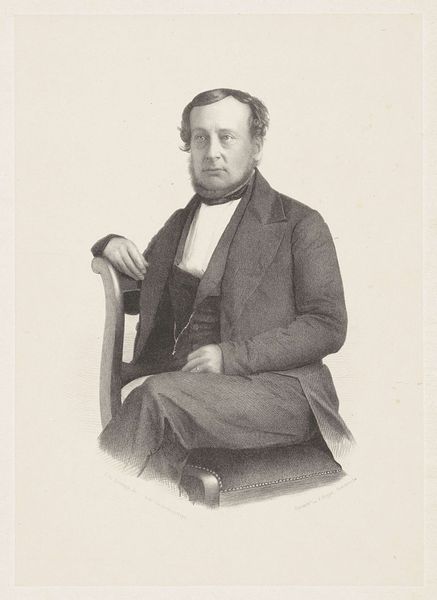
Dimensions: 9.2 × 5.6 cm (image/paper); 10.3 × 6.3 cm (card)
Copyright: Public Domain
Editor: Here we have Johann Reiner's "Portrait of Brahms," a gelatin silver print created sometime between 1862 and 1880. The tones are beautifully muted, and there's a formality to it. What stands out to you when you look at this? Curator: What interests me immediately is the labour embedded within this “simple” portrait. Consider the extraction of silver, its processing into light-sensitive emulsions, the skilled darkroom work required to coax this image onto the gelatin-silver paper, and finally, Reiner's labor as a photographer to arrange the shot. How do those material conditions impact your reading of Brahms’s portrait? Editor: I hadn't thought about it that way, actually. Focusing on the material aspects does make me consider the economics of photography at the time. Not everyone could afford to sit for a portrait like this. Curator: Precisely. Who could access photographic materials and what class did Brahms belong to that afforded him to immortalise himself in this new technology? Further, why was photography deemed an acceptable, or even desirable, method of capturing his likeness, versus traditional painted portraits for instance? Was it an issue of costs or a modern fascination with truth telling? Editor: It's fascinating to consider the layers of production and access tied into a single image. It shifts the focus from Brahms as a solitary figure to a node in a network of material processes. It does challenge our perception of photography's truth, doesn't it? Curator: Indeed. What looks like a simple likeness of a celebrated musician also provides insights into industrial practices, economic structures, and consumer culture of 19th-century Europe. How has examining materiality changed your perception of this image? Editor: I will definitely be more attentive to the stories behind the production and consumption of art. Curator: Exactly, always follow the means.
Comments
No comments
Be the first to comment and join the conversation on the ultimate creative platform.
